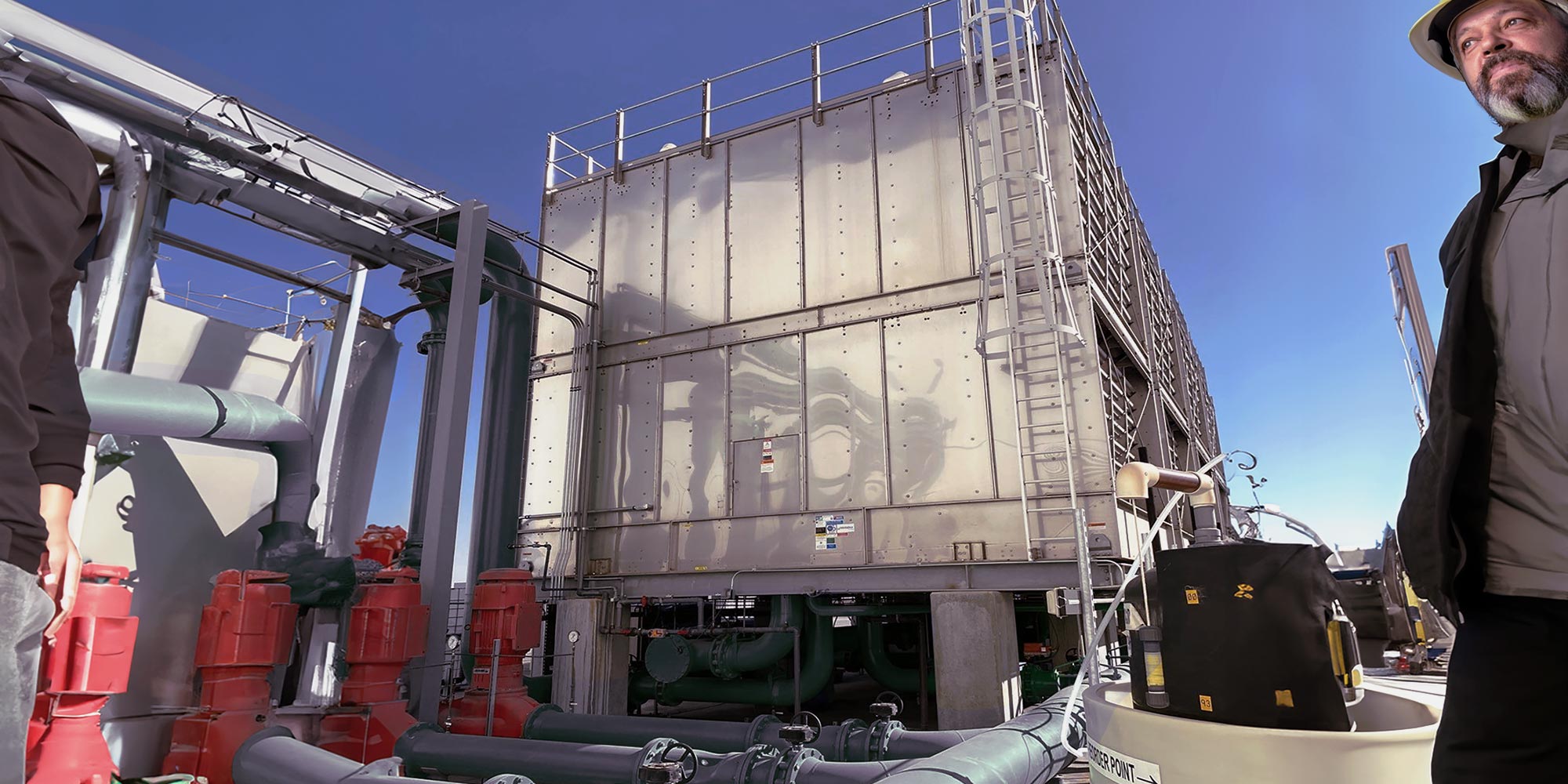Cooling towers are essential components of HVAC and industrial systems, used to dissipate heat from a facility by cooling water. Despite their effectiveness, cooling towers can experience several common problems. Here are some of the most frequently encountered issues:
1. Scale Formation
- Cause: Hard water with high mineral content can lead to the buildup of scale on the surfaces of the cooling tower and its components.
- Impact: Scale reduces heat transfer efficiency, leading to higher energy consumption and potentially overheating.
- Solution: Regular water treatment, including the use of chemical descalers and water softeners, can help manage and prevent scale buildup.
2. Corrosion
- Cause: Exposure to water, oxygen, and various chemicals can lead to corrosion of metal components in the cooling tower.
- Impact: Corrosion can weaken structural components, leading to leaks, equipment failure, and costly repairs.
- Solution: Use corrosion-resistant materials, apply protective coatings, and maintain proper water chemistry to minimize corrosion.
3. Biological Contamination
- Cause: Warm, moist environments in cooling towers can promote the growth of algae, bacteria, and fungi.
- Impact: Biological growth can clog pipes, reduce heat transfer efficiency, and increase the risk of Legionella bacteria, which causes Legionnaires’ disease.
- Solution: Implement regular biocide treatments, maintain proper water chemistry, and clean the cooling tower regularly to control biological growth.
4. Drift
- Cause: Tiny water droplets carried out of the cooling tower with the exhaust air.
- Impact: Drift can lead to water loss, spreading of waterborne contaminants, and potential environmental compliance issues.
- Solution: Install and maintain effective drift eliminators to capture and return water droplets to the system.
5. Leaks
- Cause: Leaks can occur due to corrosion, damage, or improper installation of components.
- Impact: Leaks result in water loss, reduced cooling efficiency, and potential damage to surrounding equipment and structures.
- Solution: Regular inspections and maintenance can help identify and repair leaks promptly. Use high-quality materials and proper installation techniques to prevent leaks.
6. Reduced Airflow
- Cause: Obstructions, dirty or clogged fill media, and malfunctioning fans can reduce airflow through the cooling tower.
- Impact: Reduced airflow lowers the cooling efficiency and increases the system’s energy consumption.
- Solution: Clean and maintain fill media, ensure fans are in good working condition, and remove any obstructions from the airflow path.
7. Excessive Noise
- Cause: Fans, motors, and other mechanical components can generate excessive noise if they are not properly maintained.
- Impact: Noise can be disruptive to facility operations and nearby communities, leading to complaints and potential regulatory issues.
- Solution: Regular maintenance and lubrication of mechanical components can help reduce noise. Consider installing noise-reducing equipment if necessary.
8. Motor and Fan Failure
- Cause: Overuse, improper maintenance, electrical issues, or mechanical wear and tear can lead to motor and fan failures.
- Impact: Motor and fan failures can result in reduced cooling capacity and system downtime.
- Solution: Perform regular maintenance, monitor electrical systems for issues, and replace worn components as needed.
9. Freezing
- Cause: In cold climates, the water in cooling towers can freeze if the system is not properly managed.
- Impact: Freezing can damage components, reduce cooling efficiency, and cause system shutdowns.
- Solution: Implement freeze protection measures, such as using anti-freeze solutions, heat tracing, and proper system operation during cold weather.
10. Water Distribution Problems
- Cause: Clogged or improperly adjusted nozzles, and uneven water distribution.
- Impact: Uneven water distribution reduces cooling efficiency and can cause dry spots or excessive water loss.
- Solution: Regularly inspect and clean nozzles, adjust water distribution systems, and ensure even water flow across the tower.
Conclusion
Proper maintenance and regular inspection are key to preventing and addressing these common problems with cooling towers. Implementing a comprehensive maintenance plan, including water treatment, mechanical inspections, and cleaning, can help ensure the efficient and reliable operation of a cooling tower.
Cooling Tower Replacement Parts
Cooling towers operate in highly corrosive environments and in many hot regions of the country like Arizona they run nearly all year. To keep your cooling tower running efficiently and extend its life. Whether you need cooling tower drift eliminators, float vales, or any other cooling tower part, Universal Tower Parts can supply it.
Give us a call today – 602-997-0403
Universal Tower Parts In Phoenix, AZ
Universal Tower Parts provides stainless steel and galvanized options, welded and gasketed, direct, gear reducer and belt drive units, with efficient Jedair fans, and Jedair low noise fans. Strainers, fan guards and louvers are well constructed, and designed to operate efficiently as they perform their function. Cool Core drift eliminators and fill are made by Universal Tower Parts expressly for our towers.








